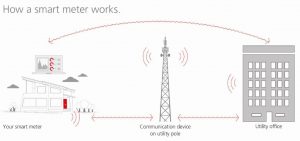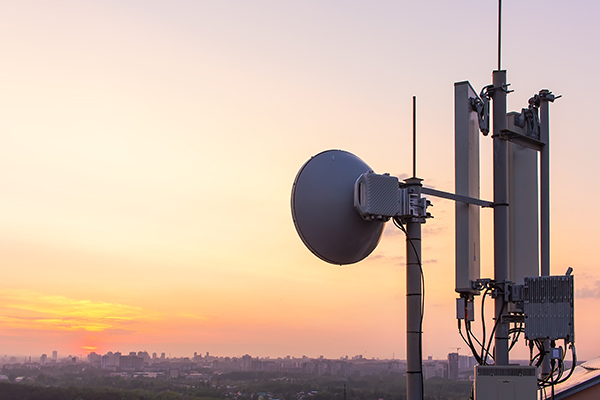Smart metering aims to reduce energy consumption and costs, and it brings together a range of disciplines and expertise. It is a global trend where governments, regional regulatory bodies, those in the energy/utilities sectors, system integrators, design houses and original equipment manufacturers (OEMs) are involved in worldwide deployments of telemetry infrastructure. This is used by utilities in residential, commercial and industrial scenarios.

The smart metering trend started in the electricity industry, initially with traditional walk-by Automated Meter Reading (AMR). This has evolved into the rapidly expanding wider practice of Advanced Metering Infrastructure (AMI), which can enable features such as dynamic, time-of-use price plans.
Smart metering now extends to gas and water, distribution automation and new areas of telemetry, such as remote sub-monitoring of Home Area Network (HAN) devices, including Programmable Control Thermostats (PCTs).
The overall smart metering trend is primarily made possible by innovation in communication technology.
The benefits of smart metering for both consumers and utilities companies are many: automated billing, profiling of end-user usage data, revenue protection and a reduction in meter-tampering-related fraud. Innovation is also enabling new, industry-specific features that are transforming the full metering market value chain.

For example, smart metering deployments are the building blocks used by the electricity industry to implement outage management or grid voltage optimisation. Water companies are using them to enhance network leakage control, while in the gas sector, they’re enabling the introduction of new methods of distribution.
All these technology enhancements improve the allocation of energy, reduce resource wastage and enable more accurate control of network distribution. This enables utilities to reduce their operational costs; these savings can be passed on to consumers.
According to ABI Research, the number of smart meters deployed worldwide by 2020 will reach 780 million for electricity, 150 million for gas and 90 million for water. It’s an enormous market opportunity. Central to it is the choice of connectivity technology, and this must be pre-determined before implementation, typically respecting national energy regulators’ requirements.

While Power Line Communication (PLC) and various versions of radio frequency (RF) radio communication technologies have historically been used for large-scale metering infrastructures, cellular communication is now the preferred choice for the lion’s share of new deployments.
This is the result of government mandates, which require the use of technology based on specifications from open standards. Utilities companies are also increasingly keen to use existing public cellular networks. Doing so reduces the capital and operational cost of large-scale roll-outs, because utilities do not need to allocate resources to design, install, operate and maintain a private network. Instead, they can focus on their core business.
The advantage of cellular open standards for utilities
Cellular open standards bring additional benefits in interoperability, coverage and capacity, as well as other critical aspects, which are especially pertinent for multiservice utilities.
A good example is when AMI platforms are used by utilities that operate multiple metering applications, such as electricity, gas and water. The benefits will also be felt in situations where smart metering is paired with other municipal automation and remote monitoring systems, such as waste collection, smart parking services and other forms of urban and environmental surveillance.
In these cases, using cellular communication makes engineers’ jobs much easier than it would be if they were required to use a more niche or proprietary radio technology. Because cellular is based on open standards, it offers better interoperability between different smart metering devices and multiple OEM suppliers. Cellular technology can therefore help minimize network design complexity and secure quality of service by reducing radio signal collision and interference.
Smart metering security
Another important aspect of smart meter design is security. Security is a fast-evolving landscape and the complex IT networks that utilities companies deploy will need to operate for a very long time. Security will therefore require continued attention throughout a network’s lifetime.
The 1983 WorldGames quote, “Hey, I don’t believe that any system is totally secure,” is not just a science fiction problem. It is not difficult to imagine a catastrophic scenario where smart meters get hacked, especially once millions are deployed and have been operating in the field for many years.
A malfunction or a malicious attack on smart meters’ firmware could result in millions of devices turning off simultaneously, risking massive damage to a large region or to an entire country’s grid. AMI must therefore safeguard security over time, which is why a key requirement of smart meters is that their firmware (the embedded software that controls the smart meter) can be updated over the air (OTA).
Sending an engineer to do this would be both expensive and slow – prohibitively so in a situation where millions of meters need to be upgraded, as could be the case following a security breach. Doing the update wirelessly removes the need for a service engineer to be sent out.
An OTA firmware upgrade is typically hard to achieve in most sub-GHz low-power radio networks, which generally only support downlink rates of a few hundred bytes of information per day to each device.
Conversely, efficient wireless upgrades are possible with Firmware Over The Air (FOTA), a feature used extensively in mobile phones, and now supported in cellular machine-to-machine (M2M) technology. It enables users to update their module firmware over a carrier network.
The use of cellular technology in smart metering
Because of these inherent benefits, cellular technology is currently enjoying widespread use in smart metering deployments, providing end-to-end connectivity in metering infrastructure. A large share of residential and commercial networks are being deployed using 2G General Packet Radio Service (GPRS) solutions, while industrial smart meters are predominantly based on 3G technology.
Even when utilities deploy point-to-multipoint solutions based on short-range radio protocols (such as wireless M-Bus 169 MHz, or other proprietary Low-Power Wide-Area radio technology), cellular is still used to provide back-haul connectivity from local HAN data concentrators to the utilities’ data management systems.
Cellular is also used in metering communication hubs, the so-called ‘Smart Meter Gateways’. This is an AMI topology, successfully deployed or planned in many European countries and in Japan, where residential and commercial buildings use cellular to connect electricity meters or separate gateway devices to the utilities’ back-haul meter data management systems. The gateway device is then used to provide connectivity through industrial, scientific and medical (ISM) wireless RF (Wireless M-Bus 868 in Europe, Wi-SUN 920MHz in Japan and ZigBee) to meters and other systems in the building.
The move to 4G LTE
Their cost-efficiency and sufficient data speeds mean 2G and 3G connectivity have been commonly used in smart meters globally. However, for future deployments, the utility ecosystem is already transitioning to 4G LTE connectivity.
This shift is being driven by two factors. The first is the product and infrastructure longevity offered by LTE technology, and the second is the introduction of specific versions of the LTE specification, such as Category 1, Category M1 and Narrowband IoT (NB-IoT). These introduce bandwidth, latency and power consumption performance that are optimized for the use cases of AMI.
Looking ahead
The availability of proven cellular communications modules can speed time-to-market and enables the creation of innovative solutions in metering markets. Future developments, such as LTE Cat 1, Cat M1 and NB-IoT promise even more exciting advances and pave the way for the transition from basic smart metering to an era of efficient wireless connectivity between multiple new categories of smart IoT sensors. This will enable those in the utilities industry to rapidly experiment with new business models by making relatively minor investments, compared to the costs and timescales that would be involved traditionally.
u-blox has a full line-up of cellular communication modules that can enable smart metering systems globally. This includes the 2G SARA-G and 3G SARA-U product families used in gas, water and standalone electricity metering installations, alongside the LARA-R, TOBY-R, and SARA-R series, which support LTE Cat 1 and Cat M1 standards for smart gateways systems.
u-blox is committed to the smart metering market, with an ATEX-certified cellular portfolio and manufacturing based on ISO 16785 to fulfill industry-specific rugged specifications, such as for operation in environments with extreme temperatures, humidity and vibration. u-blox has also been a thought leader with the introduction of NB-IoT, a technology that improves coverage and signal penetration, while extending the battery life of deployed smart meters. It simplifies the design, operation and maintenance of smart metering networks and grids, thereby helping reduce the total cost of smart metering roll-outs.
Diego Grassi joined the Product Strategy team in the Product Center Cellular at u-blox AG in July 2014. He is responsible for the development of Industrial, Retail & Enterprise markets.
Prior to joining u-blox, he held positions in product marketing, business development and strategic marketing in Semiconductors companies such as Micron, Numonyx and STMicroelectronics. There, he managed multiple demand generation and ecosystem enabling programs at worldwide level in the segments of telecom, consumer and industrial electronics.
Diego Grassi has a technical background in industrial electronics and holds a university degree with a focus on economics of the information.







